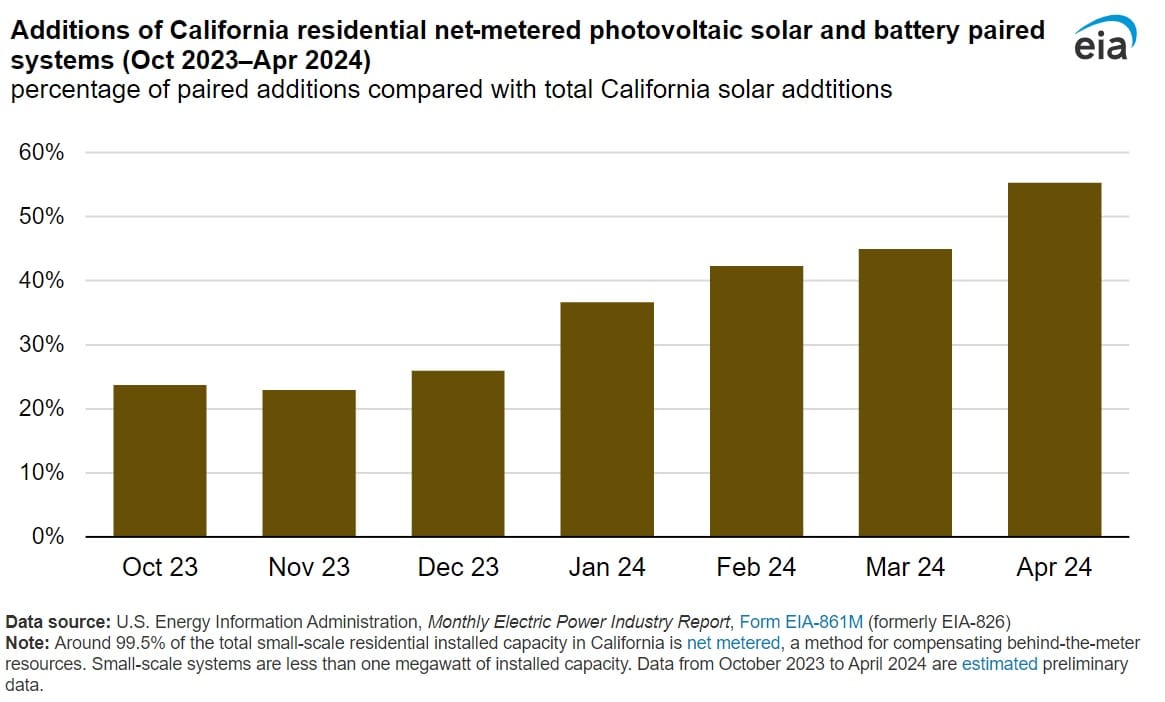Residential Solar Installations in California Increasingly Paired With Battery Systems: EIA

Pairing residential solar installations with battery storage has been increasing in California, according to a July 18 report published by the U.S. Energy Information Administration. As of April 2024, over 50 percent of residential solar photovoltaic installations were paired with battery storage, in comparison to around 20 percent during October 2023.
Excess solar generated at any given point in time can be stored in batteries and used when required. The shift towards added battery storage at solar installations that qualify for net metering followed amendments to California’s reimbursement structure. Net metering allows customers to be compensated for the distribution generation volumes that is given back to the electricity grid by crediting their power bills.
In April 2023, the state amended how domestic generators with solar on rooftops are remunerated through net metering. The new compensation structure, named net billing tariff, or NBT, provides a variable compensation rate. Under NBT, the reimbursement rate varies throughout the day depending on the time of generation, and is, on an average, less than the compensation under the prior net energy metering 2.0, which credited customer generators at a flat retail rate.
NBT incentivizes pairing solar installations with battery storage, since batteries permit households to direct power to the electricity grid during periods when demand is comparatively higher and therefore prices higher, which is usually in the evening, when solar generation assets produce lower amounts of power.
Solar installations paired with batteries accounted for around nine percent of all installed residential net metering capacity in the state, with more than 40,000 installations added equating to around 232 megawatts (MW) of new battery storage capacity between October 2023 and April 2024.
California residential solar capacity qualifying for net metering rose by 22 percent in Q3 2023 compared to Q2 2022, with households installing capacity before changes to the compensation structure. Q4 2023 saw a slowdown in growth, following changes being implemented, however net metering related capacity continued to rise. As it stands, the state has over 12,000 MW of installed solar capacity in residential net metering systems less than 1 MW.
The reimbursement rate differs throughout the day, under the changes made to the NBT structure, with the rate varying contingent on when the solar power is produced. On average the rate is less than the previous compensation structure, which credited generators at a flat power rate.
EnerKnol Pulses like this one are powered by the EnerKnol Platform—the first comprehensive database for real-time energy policy tracking. Sign up for a free trial below for access to key regulatory data and deep industry insights across the energy spectrum.
ACCESS FREE TRIAL